| |
|
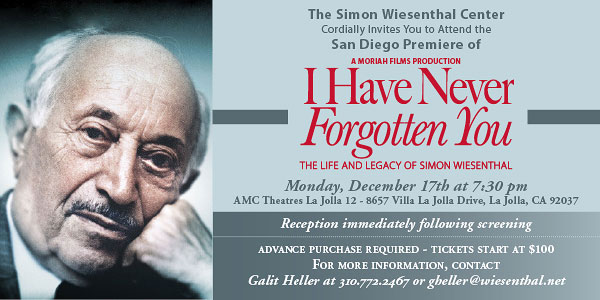
JERUSALEM DIARIES
Haredim brighten nights with Chanukiyot
By Judy Lash Balint
 JERUSALEM—Chanukah traditions in Israel are many-it's hard to escape the ubiquitous offerings of sufganiyot (doughnuts with every conceivable kind of gooey filling) that turn up at business meetings and social gatherings during the festival. School kids are on vacation (high schools are on strike, anyway…) and every shopping mall and park hosts elaborate children's entertainment. But one of the most popular Chanukah activities in Jerusalem is walking around the older neighborhoods to see the lights in action. JERUSALEM—Chanukah traditions in Israel are many-it's hard to escape the ubiquitous offerings of sufganiyot (doughnuts with every conceivable kind of gooey filling) that turn up at business meetings and social gatherings during the festival. School kids are on vacation (high schools are on strike, anyway…) and every shopping mall and park hosts elaborate children's entertainment. But one of the most popular Chanukah activities in Jerusalem is walking around the older neighborhoods to see the lights in action.
Groups of secular Israelis from all over the country gather to gape in awe at their ultra—Orthodox brethren who celebrate Chanukah in the picturesque Jerusalem neighborhood of Nachlaot.
Judy Lash Balint
Part of the commandment of the eight-day festival is to publicize the miracle of the Jewish victory over the Hellenists. That means placing the lit Chanukiya outside one's home. In parts of Nachlaot, just behind the Machane Yehuda market, almost every home has a Chanukiya burning brightly outside the door in the early evening hours. They're filled with oil (where did candles come from, anyway??) and enclosed in a brass and glass holder.
While parts of the all-pedestrian neighborhood are being gentrified and populated by English-speaking, newly-religious families, large areas are still unchanged and home to a poor community of ultra-Orthodox large families and elderly Sephardic residents. In the courtyards ringed by tiny, dilapidated apartments, children scamper about collecting Chanuka gelt from the tourists as their parents turn aside to avoid the flashlights.
One young, friendly American-born Gerer chasid invites us in to light the Chanukiya with his wife and six children. Several of his kids hand out a booklet they've prepared in Hebrew explaining the Haredi lifestyle to the outsiders. After about 10 minutes of carefully grooming the wicks for the oil, the tall gregarious Chasid starts to sing the blessings and invites everyone to join in. "The women should be careful not to sing any solos, or I'll get kicked out of the neighborhood," he laughs.
Back out in the courtyard the Chanukiyot in front of each doorway make it easy to see how many families are crammed into a small area. The darkness masks the primitive housing, while the light from the Chanukiyot in every nook and cranny creates a magical atmosphere for the scores of wandering tourists.
A few hundred yards away along King George Street and on the Ben Yehuda pedestrian mall, almost every shop-owner has a lit Chanukiya in their display window or near the entryway. Customers join in the recitation of the blessings as merchants pause to kindle the lights.
No worries here about public displays of religious expression…
Chag Chanuka Sameach!
Should we teach the Holocaust to children?
By Dov Burt Levy
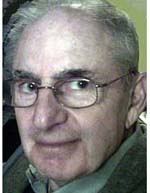 SALEM, Massachusetts—My columns on the Anti-Defamation League's position concerning the Armenian genocide brought the following letter challenging genocide remembrance and educational programs. The writer is Jewish, served in the U.S army in World War II and had a career in government and public affairs. In short, someone I take seriously. SALEM, Massachusetts—My columns on the Anti-Defamation League's position concerning the Armenian genocide brought the following letter challenging genocide remembrance and educational programs. The writer is Jewish, served in the U.S army in World War II and had a career in government and public affairs. In short, someone I take seriously.
"My problem with the Armenian genocide, and I have the same problem with our own six million dead in the Shoah, is what value is gained by inculcating in our children the not-to-be-forgotten knowledge that millions of us, Armenians or Jews, were at some point slaughtered by Germans or Turks? "I am fully aware of the admonition that "those who ignore history are condemned to repeat it." But, do we really believe
Dov Burt Levy
that if the Jews don't continue to remind their children that their co-religionists were slaughtered, they might also, in some distant future, be slaughtered because they were not constantly reminded.
"Primo Levi said, 'once they have you in concentration camps, they have you forever.' I say that being dragged into a concentration camp is involuntary. But we Jews who were never in concentration camps have an option. We can opt not to be prisoners of that past. As for the American Armenians, most have never even seen a Turk, much less been imprisoned by one. So they have an option not to be forever in terror of being locked in a church and burned to a cinder."
The letter is right to the point. Should we expose — or educate — children about the Holocaust in all its horror? No question it is an appallingly negative and depressing story. Also true is that education against genocide has provided little evidence of positive effect.
Yet, I do believe that the Holocaust story joined with the uplifting story of Israel, the first Jewish nation in over 2000 years capable of defending itself, is a positive message for our young people. As for the Armenians, they have made their decision to keep on commemorating their genocide.
What the United States Holocaust Memorial Museum has to say about the Holocaust memorials and education shows that Holocaust education reaches a far wider audience than just school children.
"The United States Holocaust Memorial Museum stimulates leaders and citizens to confront hatred, prevent genocide, promote human dignity, and strengthen democracy…. The Museum provides a powerful lesson in the fragility of freedom, the myth of progress, the need for vigilance in preserving democratic values. With unique power and authenticity…millions of people [are taught] each year about the dangers of unchecked hatred and the need to prevent genocide...we encourage them to act, cultivating a sense of moral responsibility among our citizens so that they will respond to the monumental challenges that confront our world.
"Since its dedication in 1993, the Museum has welcomed more than 25 million visitors, including more than 8 million school children and 85 heads of state. Today 90 percent of the Museum's visitors are not Jewish, and our Web site, the world's leading online authority on the Holocaust, had 15 million visits in 2006 from an average of 100 different countries daily."
We must reluctantly admit the world's record on genocide has been poor since 1945. Most of us, after World War II, thought that the evidence of the enormity, cruelty, downright horror of the Holocaust, would ensure that such events would never happen again.
How wrong we were. Since WWII, genocides have occurred in Cambodia, Rwanda, East Timor, Belgrade, Sudan, Guatemala and Darfur, according to the Yale University Genocide Studies Program. The world's response? Tepid, at best.
Now, Iranian President Mahmoud Ahmadinejad threatens the six million-person nation of Israel with extinction. And as he announces the development of nuclear weapons with delivery systems capable of reaching Israel, Ahmadinejad compounds the outrage by branding the Nazi Holocaust as a political myth. World reaction? Not great.
Today, as many as 100 major genocide education programs are operating at museums and universities. They exist throughout the United States, in Israel, in countries around the world. They are coupled with innovative projects like Stephen Spielberg's Shoah Visual Library.
The impact of all these efforts won't be known in my lifetime, and perhaps not in yours or our children's.
Sometimes we choose to do things without scientific evidence of certain results. That is called, Hope.
An unaffilated Jew in Australia's capital
By Peter Garas
|
A wonderfully cohesive program brilliantly executed ... Zina Schiff is a first rate violinist fully up to the music's tremendous technical challenges ... who can get inside the soul of Bloch's extravagantly expressive music |
|
HEART-TO-HEART
Gert looks over her first 87 years as a member of San Diego's Jewish community
By Gert Thaler
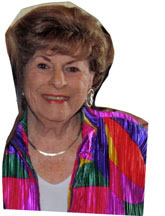 SAN DIEGO—Today I turned the pages of “My Year Book” and marked the celebration of my 87th year. And I leaned back in my chair and looked back at what has gone with the winds of time, and then looked at where I am today and some of the people who have filled my life and those who continue to fill my present days and hopefully future ones. SAN DIEGO—Today I turned the pages of “My Year Book” and marked the celebration of my 87th year. And I leaned back in my chair and looked back at what has gone with the winds of time, and then looked at where I am today and some of the people who have filled my life and those who continue to fill my present days and hopefully future ones.
I suppose it is only natural that my first recollection of people is that of my parents who were each and separately influential in molding my character. Each person is responsible for molding his or her own life once set upon a path. My father was special to me probably first because he participated in my creation after he passed his 62nd birthday. You got it right, folks, that was the number 62.
Gert Thaler
About eight years later he retired and shared a good deal of his leisure time with me. Most every Sunday in winter months my mother would pack us a lunch and Daddy and I went to the San Diego Zoo. Summertime the entire family would spend Sundays at Mission Beach which remains the same Mission Beach it was all those years ago.
I ate my first non-kosher hamburger there at age 16 and came home to report the incident to my Dad. “Did you enjoy it?” he questioned me as I shook my head explaining the intoxicating odor of frying onions that had filled the sea air.
“Then don’t tell your mother!” he warned me and went back to reading his paper. I guess that pretty well sums him up. He was my confidante, my buddy, my pal and there was nothing I could not discuss with him and in complete trust for secrecy.
My mother had the greatest influence on me. One of the jokes about her was that you could always find Anna Shelley with one hand holding a spoon and stirring whatever was cooking while the other was occupied with holding the phone. She was invariably the president of some organization and running events and saving lives of numerous immigrants, then displaced persons from the hell of the Holocaust, and our extra beds were always designated to be used by those in need.
She was one of the first Jewish women drivers in San Diego and constantly filled her Cleveland and Oakland brand auto with “girlfriends.” In the early 1920’s she drove to Tijuana three times a week to bring kosher meat and fresh foods to the Jewish families who had come from Eastern Europe unable to enter the U.S.
All of their children were born in San Diego because she made a deal with the immigration officers to take the pregnant women across the border when their labor pains commenced.
Eighty-seven years ago there were no car seats for kids and no seat belts but somehow we survived. I spent a lot of my nap time in the back seats of Mom’s cars accompanying her on her Missions of Mercy as she schlepped bread from San Diego’s one Jewish bakery and our one kosher butcher’s shop.
The ghosts of the past come to mind and march through my memories. Like so many other Jewish mothers and fathers in so many other Jewish communities of America, they laid the groundwork for Jewish life in San Diego and it thrived to the benefit of native and transplanted Jewish families of today.
I can remember the mass community meeting called in protest of the establishment of a Jewish Community Center and the rabbis speaking out against such building because of the probability of drawing people away from synagogue attendance and participation. Their pleas were lost, and the emergence of our first JCC came into being. Their predictions rang true because the statistic of about 30% of our Jewish population holding any synagogue membership has held true over the years.
San Diego still has limited opportunity to purchase kosher meat products. Kosher restaurants have come and gone and come again. To their credit we do have several caterers who abide by kosher laws and only a couple of hotels which observe such laws.
There is a passing parade of former leaders like Nathan Baranov, Samuel Fox, Henry Weinberger, Moe Berlin, Lou Moorsteen, Eddie Breitbard, Morrie Kraus, Victor Schulman whose influence helped to shape our town. The best community leader we ever had was Leonard Zanville. Sol Price put San Diego on the map first with the establishment of FedMart and then with PriceClub which eventually merged to become today’s Costco.
It takes a special kind of toughness to whip a community into shape and three Federation executives did that, Al Hutler, the inveterate initiator of what was once the United Jewish Fund, followed by the volatile Lou Leiblich and the emergence of what today is our present Federation with Stephen Abramson who developed professional leaders from untrained volunteers and who relinquished his reins to our present Director Michael Rassler bringing his own special talents and creating new successful achievements.
The parade of rabbis that have come and gone is not a long list. Once San Diego had only an Orthodox (Tifereth Israel) Synagogue and a Reform (Beth Israel) Temple. Families intermingled socially but lines were drawn in religious observance. I was sent to Beth Israel for all my religious schooling except for “Hayder” (Hebrew schooling) under the strict rule of our Orthodox Rabbi Firestone, who did not tolerate incompetence and impressed student’s knuckles by use of a long ruler being applied with strength.
Today we boast more than 30 congregations with a wide choice of Judaism’s denominations. Largest membership in the city belongs to the Reform movement with Conservative synagogues trailing them. Our two major Orthodox synagogues are usually filled each Shabbat with congregants and the remaining Chabad and other houses of worship attract loyal followers in large numbers. Two Jewish congregations continue in Tijuana, one is Chabad sponsored and the other leaning more to a Modern Orthodox observance.
A lot is happening today in Jewish San Diego because of the generosity of individuals who have lent financial support. The success of the numerous agencies which give superior service is strengthened by that support, but the leadership and the volunteers who lend their abilities are the backbone of what makes us as a community a shining example of all that is good in our world. Our Jewish schools nurture our young and bring them into maturity to become some of our leaders of tomorrow.
There is a plethora of organizations but, I’m sad to say, younger leaders are not emerging as easily as they once did. That plethora includes too-numerous-to-mention fund raising organizations for a potpourri of projects both local and overseas. Probably the strongest is AIPAC which can boast of a 900 person attendance at its once-a-year event. With no question the one organization that benefits every member of the community, Jew and non-Jew, is the Anti-Defamation League (ADL) under the leadership of Morris Casuto and because of ADL’s work Jews should lend their financial support in any amount they are able.
Eighty-seven years of looking back and looking at my Jewish life today.
How lucky I am to have been and continue to be a part of it .
Certainly cause for me to sing “Happy Birthday”.
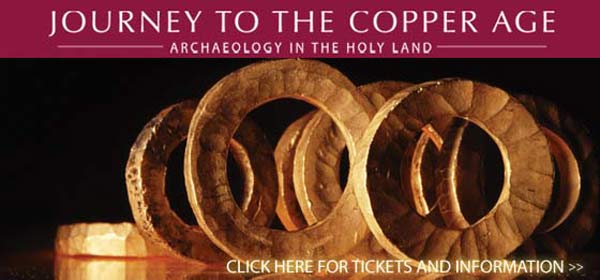

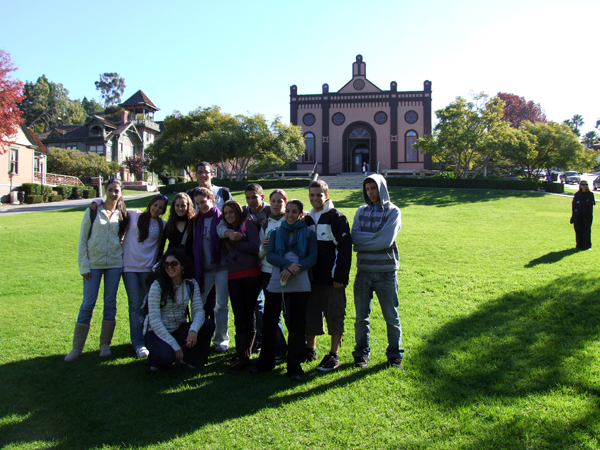
THE JEWISH CITIZEN
School, prompted by constant Hamas rockets, determined to be best in Israel
By Donald H. Harrison
SAN DIEGO—I had the pleasure yesterday to conduct 14 students and their escorts from Sha'ar Hanegev High School around Old Town San Diego State Historical Park and to the county's nearby Heritage Park, telling them a few stories about San Diego's general and Jewish history.
After I lectured, the students went off for what I'm certain was what they considered to be the best part of the morning's proceedings—the shopping—giving me an opportunity to chat briefly with the principal of Sha'ar Hanegev High School, Aharale Rotstein.
For those of you who may not recognize the name of the region in Israel, it is in the Northern Negev, an area of kibbutzim, a moshav and a student village. It is very close to the Israeli city of Sderot, and looks across the fence to the Gaza Strip. In other words, it is the area constantly under fire from Hamas-launched Katyusha rockets.
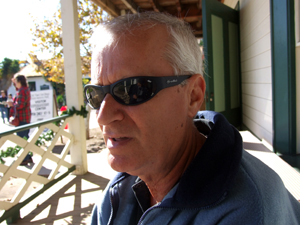 I asked Rotstein how one conducts classes under such circumstances. He told me that from the time that a siren blares to the rocket's detonation is only 20 seconds--and in that time school children must exit their classrooms in orderly fashion and get to a safe room. All classrooms are within 20 seconds of these windowless, reinforced concerte rooms, but kids, being kids, don't always stay in the classroom during the school day.. Some go out on the grounds, where they are more than 20 seconds awa from safety. "But we cannot close them in a jail," he said. I asked Rotstein how one conducts classes under such circumstances. He told me that from the time that a siren blares to the rocket's detonation is only 20 seconds--and in that time school children must exit their classrooms in orderly fashion and get to a safe room. All classrooms are within 20 seconds of these windowless, reinforced concerte rooms, but kids, being kids, don't always stay in the classroom during the school day.. Some go out on the grounds, where they are more than 20 seconds awa from safety. "But we cannot close them in a jail," he said.
Usually the all-clear signal will sound after two or three minutes and the students and their teacher will return to class. This can happen multiple times in a day. Rotstein estimated that in the last academic year, 30 percent of the school year was victim to the rocket attacks.
This year, he said, there has been less rocketing, and more time for students to actually be in the classroom, but one must not be too optimistic. "This morning in Sha'ar Hanegev 17 missiles fell down," Rotstein said. "So you can imagine."
Although to date there have been no student casualties from the rocket attacks--at least not in a physical sense--Rotstein said that in the last couple of years, a worker and two teachers were wounded. The worker's wounds to the stomach were quite severe, and although it has been more than a year since his injuries, the worker still is in very bad shape. A teacher went deaf in one ear from the sound of an explosion nearby, and a second teacher sustained minor wounds on the arm, Rotstein said.
If students have thus far avoided physical trauma, it is anything but certain that they are emerging unscathed psychologically. That they have been affected "is for sure," said Rotstein. "We don't know how to measure it yet, but it is for sure."
Sometimes Sha'ar Hanegev residents try to make jokes about the missiles, a coping mechanism because "we have to live with it," the principal said. "We are there, we are not moving, just like you are here in San Diego. We are going to build a new school, a more protected school," he said.
The regional school formerly had 1,200 students but the number recently dropped to 1,000. Many families moved from Sha'ar Hanegev or sent their children to places farther from Gaza Strip for their protection.
In making plans for the new school, a primary consideration was guaranteeing that it will be as rocket proof as possible. Since that initial phase, however, Rotstein said there has been a lot of talk in Sha'ar Hanegev about how the new school also will make a statement to the rest of the world "that we have a future, and because we have a future, we should be the best school in Israel." Accordingly, there is far less talk about protection and more about education, he said.
Rotstein said the 1,000 students at the Sha'ar Hanegev Hig School come from diverse Jewish backgrounds, ranging from secular to religious. "We are trying to build a pluralistic new school that clarifies Jewish values and Jewish identity because I think that Israeli society is now in a very deep identity crisis," Rotstein said. "We are 60 years old now, and we are starting to ask who we are."
Although this trip for the 14 students was just two weeks long--with excursions to Sea World and Disneyland thrown in--the students did have a chance to get to know San Diego Jewish Academy students' families, who hosted them in their homes, and were able to give lectures about Israel to pupils in the lower grades as well as the upper school.
Rotstein believes the next step ought to be a formal exchange program, in which students from Sha'ar Hanegev could study in San Diego for a semester, and vice versa.
Spending fourteen days away from rockets must have been a welcome respite, I said to Rotstein.
He responded that the students had enjoyed themselves, but "they are readuy to go home." No matter what, he said, "that is the way it is; you miss your home."

SAN DIEGO JEWISH WORLD THE WEEK IN REVIEW
WEDNESDAY, DECEMBER 12
Norman Greene in San Diego: Tel Aviv unblocked this San Diego writer
Donald H. Harrison in San Diego: Exhibit to preview possible creation of a School of the Arts within SDJA next year
Ira Sharkansky in Jerusalem: Do Jews have a gene for excess conscience?
Dorothea Shefer-Vanson in Mevasseret Zion, Israel: Reactions mixed to Israel's rainy winters
TUESDAY, DECEMBER 11
Donald H. Harrison in San Diego: Former 'Little' Pal now a mentor himself.
Larry Zeiger in La Jolla, California: Cry Baby: A flashback to the 1950's.
MONDAY, DECEMBER 10
Donald H. Harrison in San Diego: Synagogue bids farewell to a woman who shunned the honors that inundated her
Sheila Orysiek in San Diego: City Ballet's Nutcracker sparkles
SUNDAY, DECEMBER 9
Alanna Berman in San Diego: Conference probes 'duty' of Jewish journalists toward Israel's image
Shoshana Bryen in Washington D.C.: Capability more important than 'intent' in measuring nuclear danger from Iran
Donald H. Harrison in San Diego: San Diego connections fail to rescue Shadow Soldier from fear of intimacy
Rabbi Baruch Lederman in San Diego: When all seems impossible, then persevere
Rabbi Leonard Rosenthal in San Diego: Wicked examines quesiton of 'otherness'
FRIDAY, DECEMBER 7-SATURDAY, DECEMBER 8
Shoshana Bryen in Washington D.C.: Questions abound about NIE assessment
Donald H. Harrison in San Diego: Let's stop demonizing undocumented immigrants; let's help Mexico's economy
Sheila Orysiek in San Diego: If U.S. intelligence was so wrong about Iraq, why does Left believe it about Iran? Reader Response
Michael M. Rosen in San Diego: Boling takes San Diego City Council campaign to Beth Jacob Congregation
THURSDAY, DECEMBER 6
Shoshana Bryen in Washington D.C.: NIE has 'moderate confidence' Iran has not reactivated its nuclear weapons program
Peter Garas in Canberra, Australia: Stingy? Friendly to strangers? You may be genetically predisposed to such behaviors
Irv Hackel in Brookyn, N.Y.: 'There are angels out there' at Ezer Mizion
Donald H. Harrison in San Diego: His remains sent from Poland to U.S. so he could be buried where Jews would visit
Donald H. Harrison: Chanukah at Hillel: A meshuganah auction
Ira Sharkansky in Jerusalem: Shock and disbelief in Israel over U.S. latest estimate on Iran's nuclear program
< BACK TO TOP
|
|

